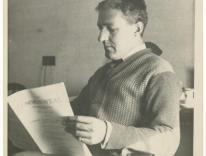NPR has an interesting story on the history of the waterboarding technique. Not much new information in the story, but it provides a useful summary of the technique's past, in any event. Here are some excerpts:
Its use was first documented in the 14th century, according to Ed Peters, a historian at the University of Pennsylvania. It was known variously as "water torture," the "water cure" or tormenta de toca a phrase that refers to the thin piece of cloth placed over the victim's mouth. ..."The patient strangled and gasped and suffocated and, at intervals, the toca was withdrawn and he was adjured to tell the truth. The severity of the infliction was measured by the number of jars [of water] consumed, sometimes reaching to six or eight," writes Henry Charles Lea in A History of the Inquisition of Spain.
But is it torture? A few clues:
In the war crimes tribunals that followed Japan's defeat in World War II, the issue of waterboarding was sometimes raised. In 1947, the U.S. charged a Japanese officer, Yukio Asano, with war crimes for waterboarding a U.S. civilian. Asano was sentenced to 15 years of hard labor."All of these trials elicited compelling descriptions of water torture from its victims, and resulted in severe punishment for its perpetrators," writes Evan Wallach in the Columbia Journal of Transnational Law. On Jan. 21, 1968, The Washington Post ran a front-page photo of a U.S. soldier supervising the waterboarding of a captured North Vietnamese soldier. The caption said the technique induced "a flooding sense of suffocation and drowning, meant to make him talk." The picture led to an Army investigation and, two months later, the court martial of the soldier.
UPDATE:BoingBoing points its readers towards a new site, waterboarding.org. Here's an excerpt from its inaugural post:
The confirmation vote for Michael Mukasey, nominee for United States Attorney General, is scheduled for Tuesday, November 6. In his confirmation hearing Judge Mukasey was asked for his opinion on waterboarding as a constitutionally valid technique for interrogation. Mukasey replied, "I don't know what's involved in the technique. ... I think it would be irresponsible of me to discuss particular techniques with which I am not familiar."Waterboarding.org would like to offer to help the nominee become more familiar with water-based coercive interrogation techniques. Using unclassified sources, news reports, and historical records we are attempting to put together as clear a picture as possible of this technique, its history, its legality, and the scope of its use. We are also attempting to organize a group of doctors, paramedics, lawyers, and volunteers to allow anyone who remains confused or unclear on the details of waterboarding to safely subject themselves to as much of the technique as they are willing to endure.We look forward to advising, educating, and assisting Michael Mukasey, future candidates, public figures, and anyone else who professes ignorance of our nation's most controversial coercive interrogation technique.


